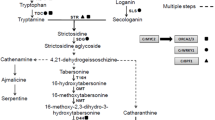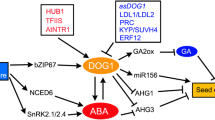Abstract
NO (nitric oxide), known as a key signal molecule in plant, plays important roles in regulation of stomatal movement. In this study, microtubule dynamics and its possible mechanism in the NO signal pathway were investigated. The results were as follows: (i) In vivo stomatal aperture assays revealed that both vinblastine (microtubule-disrupting drug) and SNP (exogenous NO donor) prevented stomatal opening in the light, and vinblastine even could enhance the inhibitory effect of SNP, whereas taxol (a microtubule-stabilizing agent) was able to reduce this effect; (ii) microtubules in the opening Arabidopsis guard cells expressing GFP:α-tubulin-6 (AtGFP:α-tubulin-6) were organized in parallel, straight and dense bundles, radiating from the ventral side to the dorsal side, and most of them were localized perpendicularly to the ventral wall; (iii) under the same environmental conditions, treated with SNP for 30 min, the radial arrays of microtubules in guard cells began to break down, twisted partially and became oblique or exhibited a random pattern; (iv) furthermore, the involvement of cytosolic Ca2+ in this event was tested. Stomatal aperture assays revealed that BAPTA-AM (a chelator of Ca2+) greatly suppressed the effect of NO on stomatal closure; however, it did not show the same function on stomatal closure induced by vinblastine. When BAPTA-AM was added to the SNP-pretreated solution, the SNP-induced disordered microtubulue cytoskeleton in guard cells underwent rearrangement in a time-dependent manner. After 30 min of treatment with BAPTA-AM, the cortical microtubules resumed the original radial distribution, almost the same as the control. All this indicates that NO may promote rearrangement of microtubule cytoskeleton via elevation of [Ca2+]cyt (free Ca2+ concentration in the cytoplasm), finally leading to stomatal closure.
Similar content being viewed by others
References
Carlos G M, Lorenzo L. Abscisic acid, nitric oxide and stomatal closure—Is nitrate reductase one of the missing links? Trends Plant Sci, 2003, 8: 20–26
Delledonne M, Xia Y J, Dixon R A, et al. Nitric oxide functions as a signal in plant disease resistance. Nature, 1998, 394: 585–588
Clarke A, Desikan R, Hurst R D, et al. NO way back: Nitric oxide and programmed cell death in Arabidopsis thaliana suspension cultures. Plant J, 2000, 24: 667–677
Zeidler D, Zahringer U, Gerber I, et al. Innate immunity in Arabidopsis thaliana: Lipopolysaccharides activate nitric oxide synthase (NOS) and induce defense genes. Proc Natl Acad Sci USA, 2004, 101:15811–15816
Maeli M, William U, Jessica K, et al. Plant stomata function in innate immunity against bacterial invasion. Cell, 2006, 126: 969–980
Carlos G M, Lorenzo L. Nitric oxide induces stomatal closure and enhances the adaptive plant responses against drought stress. Plant Physiol, 2001, 126: 1196–1204
Desikan R, Griffiths R, Hancock J, et al. A new role for an old enzyme: Nitrate reductase-mediated nitric oxide generation is required for abscisic acid-induced stomatal closure in Arabidopsis thaliana. Proc Natl Acad Sci USA, 2002, 99: 16314–16318
Bright J, Desikan R, Hancock J T, et al. ABA-induced NO generation and stomatal closure in Arabidopsis are dependent on H2O2 synthesis. Plant J, 2006, 45: 113–122
Liu X, Zhang S Q, Lou C H. Involvement of Ca2+ in stomatal movement of Vicia faba L. regulated by nitric oxide. J Plant Physiol Mol Bio, 2003, 29(4): 342–346
Maoz L, Mohamad A A, Eduard B, et al. Microtubules of guard cells are light sensitive. Plant Cell Physiol, 2004, 45: 573–582
Kinoshita T, Doi M, Suetsugu N, et al. Phot1 and phot2 mediate blue light regulation of stomatal opening. Nature, 2001, 414: 656–660
Lemichez E, Wu Y, Sanchez J P, et al. Inactivation of AtRac1 by abscisic acid is essential for stomatal closure. Gene Dev, 2007, 15:1808–1816
Marcus A I, Moore R C, Cyr R J. The role of microtubules in guard cell function. Plant Physiol, 2001, 125: 387–395
Zhang W, Fan L M, Wu W H. Osmo-Sensitive and stretch-activated calcium-permeable channels in Vicia faba guard cells are regulated by actin dynamics. Plant Physiol, 2007, 143: 1140–1151
Assmann S M, Baskin T I. The function of guard cells does not require an intact array of cortical microtubules. J Exp Bot, 1998, 49: 163–170
Huang R F, Wang X C. Role of microtubules in stomatal movement. Acta Bot Sin, 1997, 39: 253–258
Yu R, Huang R F, Wang X C. Microtubule dynamics are involved in stomatal movement of Vicia faba L. Protoplasma, 2001, 216: 113–118
Carlos G M, Robert G, Sergei S, et al. Nitric oxide regulates K+ and Cl− channels in guard cells through a subset of abscisic acid-evoked signaling pathways. Proc Natl Acad Sci USA, 2003, 100: 11116–11121
Allen G J, Chu S P, Harrington C L, et al. A defined range of guard cell calcium oscillation parameters encodes stomatal movements. Nature, 2001, 411: 1053–1057
McAinsh M R, Gray J E, Hetherington A M, et al. Ca2+ signalling in stomatal guard cells. Biochem Soc Trans, 2000, 28: 476–481
Sokolovski S, Blatt M R. Nitric oxide block of outward-rectifying K+ channels indicates direct control by protein nitrosylation in guard cells. Plant Physiol, 2004, 136: 4275–4284
Mazars C, Thion L, Thuleau P, et al. Organization of cytoskeleton controls the changes in cytosolic calcium of cold-shocked Nicotiana plumbaginifolia protoplast. Cell Calcium, 1997, 22: 413–420
Thion L, Mazars C, Thuleau P, et al. Activation of plasma membrane voltage-dependent calcium-permeable channels by disruption of microtubules in carrot cells. FEBS Lett, 1996, 393: 13–18
Author information
Authors and Affiliations
Corresponding author
Additional information
These authors contributed equally to this work.
Supported by the New Star Plan of Science & Technology of Beijin, China (Grant No. 2003B34) and National Natural Science Foundation of China (Grant Nos. 30600318 and 30400228)
About this article
Cite this article
Zhang, Y., Wu, Z., Wang, X. et al. Rearrangements of microtubule cytoskeleton in stomatal closure of Arabidopsis induced by nitric oxide. Chin. Sci. Bull. 53, 848–852 (2008). https://doi.org/10.1007/s11434-008-0142-7
Received:
Accepted:
Published:
Issue Date:
DOI: https://doi.org/10.1007/s11434-008-0142-7




